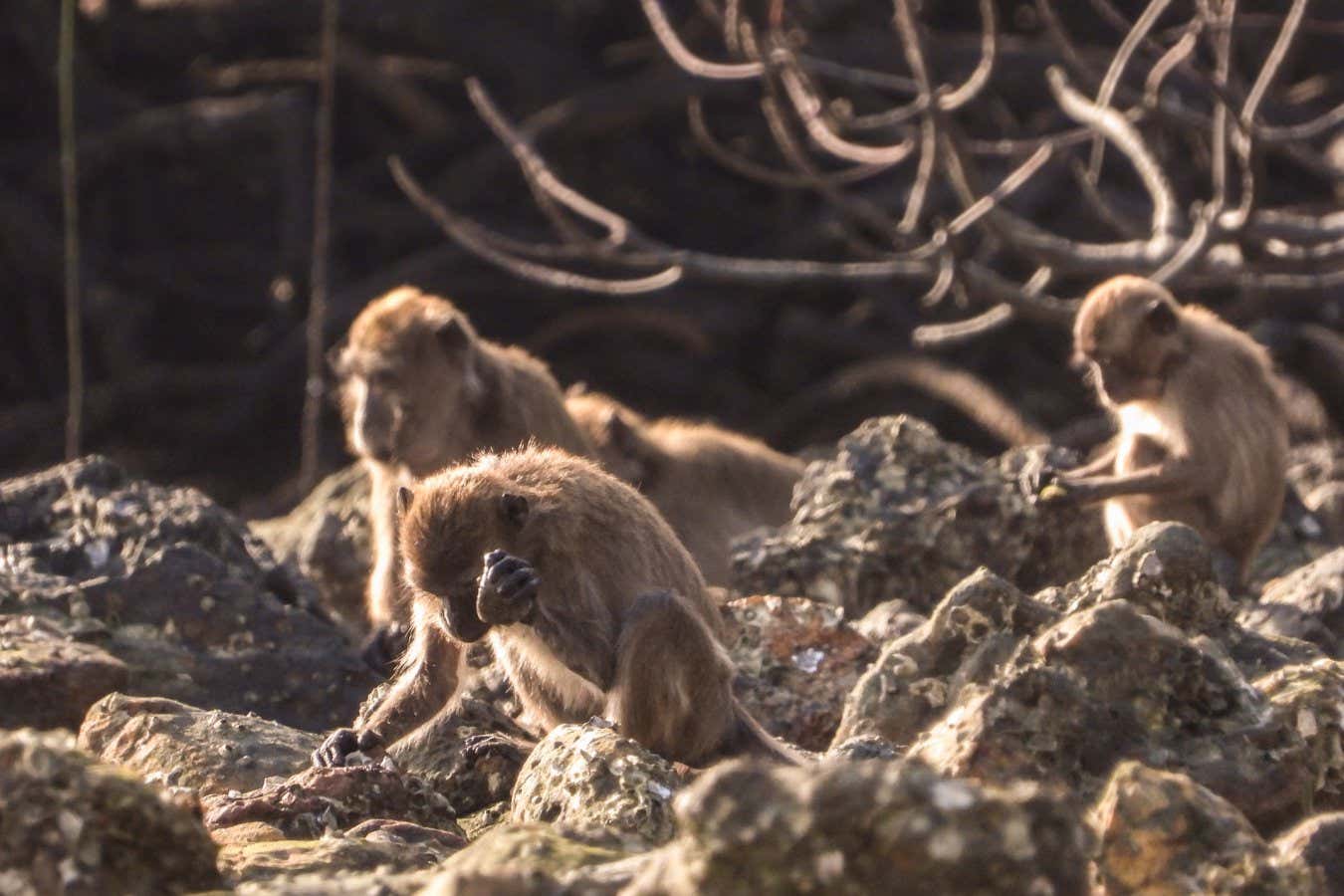When macaques use stones to crack nuts, they accidentally create flakes that look like early human artefacts, raising questions about whether such objects were made deliberately
By Christa Lesté-Lasserre
10 March 2023
Macaques using stones to crack open nuts
Lydia V. Luncz
By using stones to break open nuts, monkeys accidentally create sharp-edged flakes that look like the tools believed to have been used by our ancient human relatives.
The finding casts doubt on whether all the stone flakes found in archaeological digs really are the tools of early hominins — and raises the possibility that they might be accidental by-products of hitting things with whole stones, says Lydia Luncz at the Max Planck Institute for Evolutionary Anthropology in Leipzig, Germany.
In 2016, Luncz and her colleagues realised that Brazilian capuchins produce stone flakes from the rocks they use to pound food, dig and engage in sexual displays, without necessarily meaning to. The flakes were essentially identical to those found in hominin settlements dating to at least 3 million years ago. It made the team wonder whether the artefacts really reflected any technical planning by those early humans.
Advertisement
Since then, Luncz and her colleagues have been studying tool use in long-tailed macaques on the islands of Phang Nga Bay in Thailand. In the forests there, Luncz stumbled across nut-cracking sites – a surprise, as long-tailed macaques weren’t previously known to break open nuts.
The team set up motion-activated cameras to study the behaviour of the wild macaques. During 100 hours of footage, the team witnessed monkeys accidentally creating flakes as they struck nuts between two stones – serving as a hammerstone and an anvil – and then leaving the broken stones to find new, whole stones.
This is almost exactly what the capuchins did in the earlier study, says Luncz, showing that the flake-making wasn’t a one-off. “This was occurring on the other side of the planet, in a different ecosystem and a different species,” she says. “So it was just so obvious that this is a primate thing. This is a foraging behaviour that we assume also happened in early hominins.”
